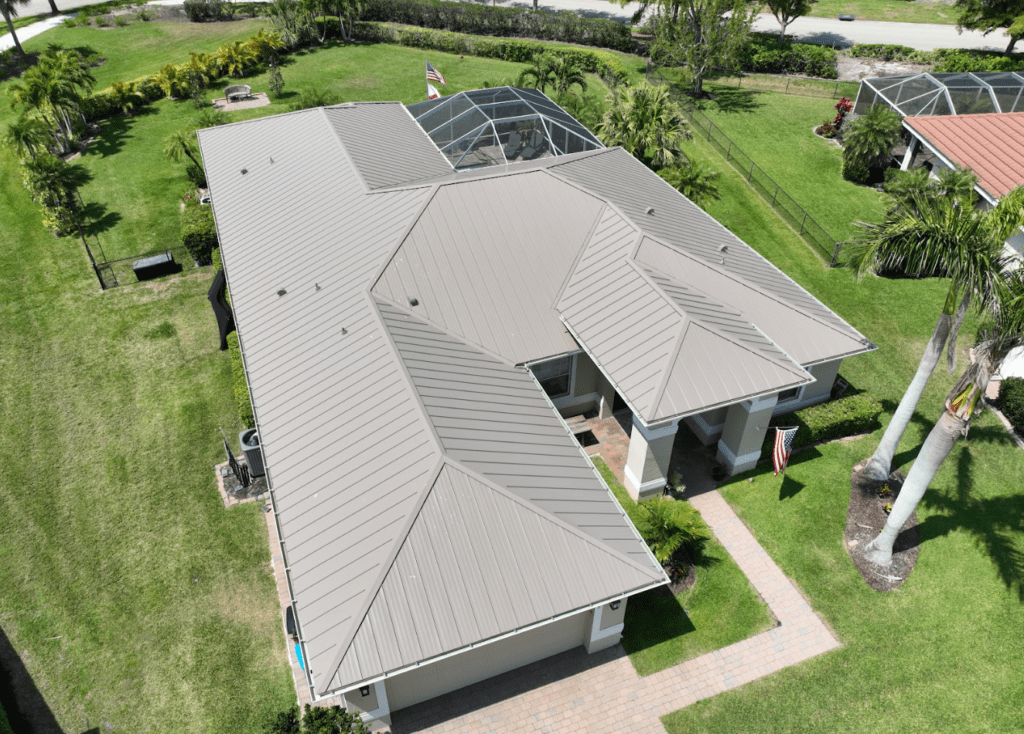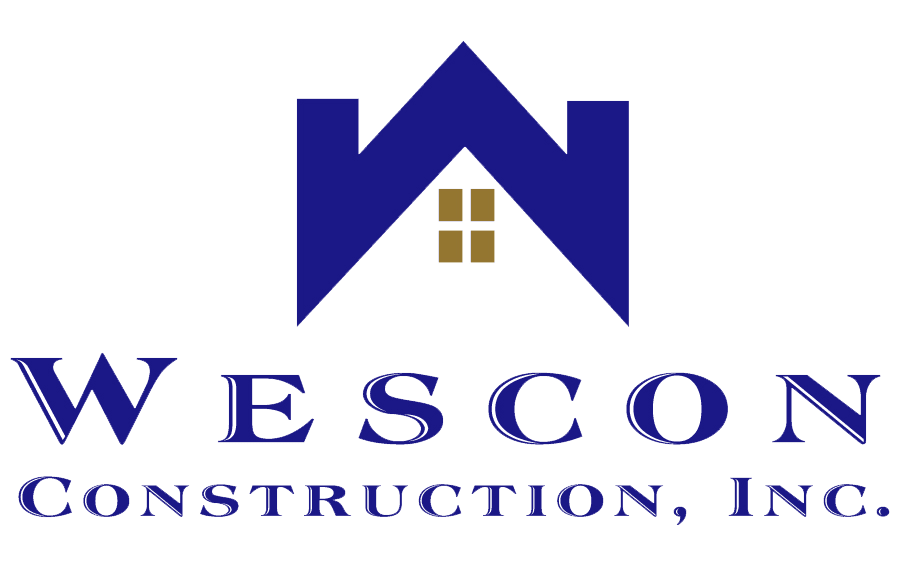Most Common Roof Damages & How To Fix
This article discusses the signs of roof damage, including leaks and missing shingles, and how to fix them. Early detection can save time and money. It covers common types of roof damage and provides tips on how to fix them.
Key Takeaways
- Look for visible signs like cracked shingles or water stains.
- Hail can leave marks that compromise your roof’s integrity.
- Wind can tear shingles and create gaps that lead to leaks.
- Water damage can lead to mold, so fix leaks quickly.
- Regular maintenance is crucial to prevent future damage.
Identifying Signs of Roof Damage
When you’re checking your roof, you need to know what to look for and act fast. Sometimes a small issue can lead to bigger problems. Here’s how you can spot early warning signs of damage.
Visible Shingle Cracks: Early Detection and Action
1. Inspect shingles for visible cracks or splits.
2. Document any damage with photos for reference.
3. Assess the extent of the damage to determine if repairs are needed.
4. Consider consulting a professional for widespread issues.
5. Regularly inspect your roof to catch problems early and prevent costly repairs.
It’s important to act as soon as you notice any crack patterns. Taking a few minutes to walk your roof and document the issues may prevent costly damage later.
Water Stains on Ceilings: A Sign of Roof Trouble
1. Browning or discoloration on ceilings may indicate leaks.
2. Early detection of suspected areas is crucial.
3. Look for discoloration in the attic or below rooms.
4. Observe if stains are growing larger over time.
5. Seek a roof repair check-up if unsure about the source.
Granules in Gutters: A Sign of Roof Deterioration
1. Granules in gutters signal deteriorating shingles.
2. Aging roofs lose granules, compromising UV protection and weather resistance.
3. Regularly clear gutters and monitor sediment levels.
4. Consult professionals for roof repair advice.
5. Proactive monitoring can prevent significant future issues.
Understanding Hail Damage
When a hail storm hits, you really need to pay close attention to your roof. Hail can cause surprising damage that may not be obvious at first glance. You might see subtle hints that something’s not right, so never ignore a post-storm inspection.
Impact Marks on Shingles
After a hail storm, inspect your roof for dents, cracks, or bruises on the shingles. Look for small dents, cracks along the shingle surface, and unusual bruising. Pay attention to early signs of damage to prevent larger issues, especially when your roof is vulnerable to weather extremes.
Compromised Granules
Hail can strip away the granules from your shingles, which are crucial for protecting your roof from UV rays and water. Without these granules, your roof might seem fine at first, but over time the effects add up. You could see granules pooled in your gutters, and that’s a sign you need to act. Remember, staying on top of these issues can save you costly repairs later.
Long-Term Effects of Hail
Hail damages can lead to long-term issues, affecting your roof’s resistance to water and UV exposure. To prevent this, regularly inspect your roof after severe weather events, contact a professional if you notice unusual marks or granule loss, and monitor your gutters for granule buildup.
Don’t forget, if you’re dealing with severe weather effects, you may benefit from additional guidance like hurricane repair tips. Taking prompt action now can protect your home and save you money in the future.
Torn or Missing Shingles
• Shingles torn off or missing after a storm expose the roof to water and hazards.
• Look for missing shingles in patches, dislodged pieces near the edges, and scattered shingles.
Curled Shingle Edges
• Curling shingles edges indicate wind damage, leaving parts of the roof vulnerable to leaks and deterioration.
• Check for uneven bending along the shingle edge.
Structural Vulnerabilities
• Wind damage can compromise the underlayment of roof deck.
• Look for gaps or unusual spacing between shingles and roof surface, soft spots or weak areas on the roof deck, and evidence of water intrusion in areas that should be watertight.
Addressing Water Damage
Water seeped in from leaks can quickly turn what starts as a small problem into a major headache. In this section, you’ll learn how to spot issues early and fix them before they worsen.
Leaks and Moisture Issues
You might notice small drips or water stains on your ceiling, signaling that leaks are underway. These leaks allow moisture to build up, potentially damaging your roof’s foundation and underlying structure. Here are some common causes you should check for:
- Cracked or broken shingles
- Faulty flashing
- Blocked gutters
When you detect any of these signs, consider immediate intervention. Immediate action can save you from expensive repairs and other structural problems further down the road. structural problems later. For quick fixes, using a good roofing sealant can help block minor leaks until you’re ready for thorough repairs.
Mold Growth Risks
Persistent moisture can encourage mold growth, leading to uneven damage and even affecting your indoor air quality. Mold often starts in unseen areas, like under shingles or in your attic, and can quickly spread if left untreated. Watch out for these indicators:
- Musty odors in your home
- Discoloration on interior walls
- Staining on ceiling surfaces
If you suspect mold, it’s wise to get a professional assessment as soon as possible to prevent long-term health and structural risks.
Repairing Water-Damaged Areas
- Inspect affected areas for full damage scope.
- Clear debris or accumulated water from damaged spots.
- Dry the area thoroughly to prevent moisture buildup.
- Replace compromised materials and reinforce vulnerable sections.
- Maintain a roof as the first line of defense to save time and money.
Dealing with Moss and Algae Growth
When you inspect your roof, one of the first things you should check for is unwanted moss or algae growth. These can appear as thick, green patches or slimy streaks that might indicate the onset of potential problems.a brewing problem. Always start cleaning your roof immediately when you notice moss buildup. This is to prevent further damage and preserve your roof’s lifespan.
Identifying Moss on Roof
- Moss or algae growth can appear as thick, green patches or slimy streaks.
- Moss often has a rough feel compared to clean shingles.
- Observe clusters of green or dark patches on shingles.
- Look for rough, uneven texture in certain areas.
- Note areas where debris and moisture collect.
Preventing Moisture Accumulation
- Address drainage issues and clean debris immediately.
- Trim nearby tree branches for sunlight. Regularly clean gutters.
- Check seals and flashing for gaps that might allow water to seep in.
- Use a vinegar solution on problem spots.
- Schedule regular inspections every few months.
Cleaning and Maintenance Tips
- Remove moss or algae yourself or seek professional help if severe.
- Regular cleaning and prompt action ensure long-term roof health.
Repairing Flashing Damage
When it comes to roof maintenance, you shouldn’t ignore flashing damage. The metal pieces sealing your roof’s joints are key to keeping water out, and if they’re ruined or loose, you might end up with leaks in no time.
Signs of Damaged Flashing
You can spot problems if you look closely. Check for:
- Rust or corrosion spots
- Visible cracks or splits in the metal
- Gaps or loose fitting that let moisture slip in
Sometimes, all you need is a careful inspection to catch these issues early. Start by recognizing the signs and act quickly to protect your home.
If you notice any of the above signs, it’s a good idea to set aside some time right away. Addressing minor damage can save you from bigger headaches down the road.
Importance of Proper Sealing
Obvious signs of wWearing or damaged flashing not only looks bad but also invites water intrusion, causing issues inside walls and ceilings. Instead of quick fixes with extra caulk, focus on restoring the seal to ensure roof safety during rough weather.
- Make sure repairs match the original materials when possible
- Use high-quality sealants that hold up in all weather
- Avoid DIY fixes that might only postpone bigger repairs
Repair vs. Replacement Options
When choosing between simple repair or complete replacement, consider the extent of the damage. Seek a professional opinion before making a decision, as unchecked flaws can worsen and lead to costly repairs. Handling flashing work on your own can be risky, so it’s best to consult an expert for the most effective approach.
Preventing Future Roof Damage

Regular Inspections and Maintenance
You need to take time to examine your roof every now and then. Regular check-ups can extend your roof’s life. Spending a few minutes to inspect for broken shingles, blocked gutters, or early signs of water leakage can save you a lot of trouble later. Here are some steps you can follow:
- Look over your roof for visible damage or wear.
- Clean your gutters to avoid water buildup.
- Check around flashings and vents for any loose parts.
Keeping an eye on your roof can stop small problems from turning into bigger issues.
You might find this checklist helpful:

Choosing Durable Materials

Choosing high-quality materials for roof replacement or construction is crucial for weather resistance. Consider reinforced shingles or sturdy metal panels. If dealing with small leaks, consult guides on roof repair basics for long-term fixes.
Keep in mind these points:
- Pick materials that have proven durability in your area.
- Look for products with a good warranty.
- Ask your supplier about the best options for your climate.
Weatherproofing Strategies
To ensure a strong roof, it’s crucial to seal every joint and edge tightly, ensuring it can withstand any weather. For temporary issues, leak patching methods can be used to secure weak spots.
Consider these actions:
- Seal gaps around flashings, vents, and edges carefully.
- Use quality underlayment to create a solid base.
- Install additional protective barriers where needed.
Regular checks and maintenance of your roof, including cleaning gutters, fixing leaks, and trimming trees, can help it withstand extreme weather and reduce repair costs over time, reducing future headaches.
Roof Damage and Repairs
Paying regular attention to the condition ofWatching your roof is important. Roof damage can arise unexpectedly and cause worse issues if left ignored. Fixing small leaks or missing shingles early can save you time and money. Remind yourself that you have help. Hire a roofing provider for a complete assessment and options. They can advise on repairs and damage prevention. To ensure your property remains protected and your roof stays in excellent condition for years to come, we recommend taking action promptly.
Need Expert Advice on Your Roofing Project? Contact us today!
"*" indicates required fields
